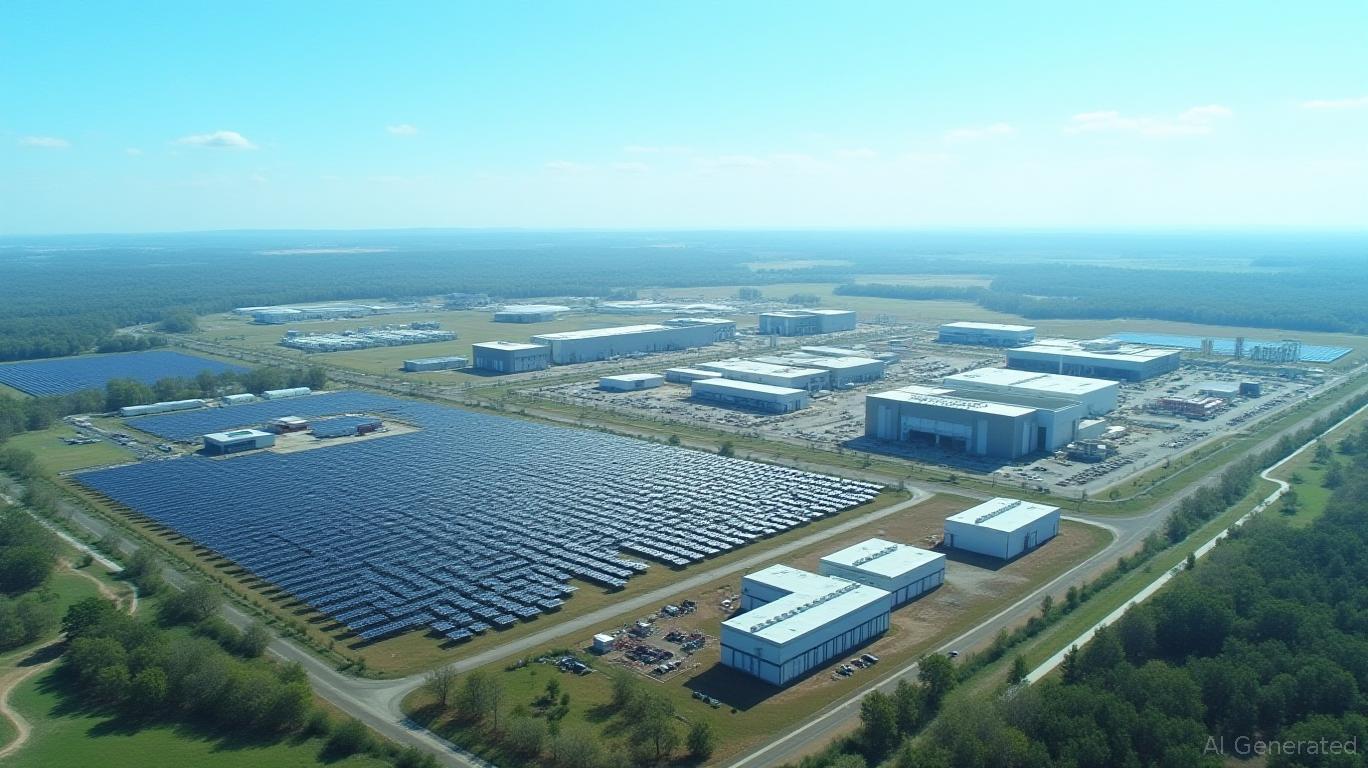Georgia Power's Strategic Shift: A Catalyst for Tech-Driven Regional Growth
Georgia has long been a magnet for global businesses, and its status as the “Top State for Business” for 16 consecutive years is no accident. Under the leadership of Arthur Tripp, newly appointed Vice President of Economic Development at Georgia Power, the utility is doubling down on its role as a driver of regional growth. Tripp's policy expertise and the company's century-old track record of job creation and capital investment position Georgia as a prime destination for tech, media, and telecom (TMT) firms—sectors increasingly aligned with SPACs like Wintergreen Acquisition Corp., which is targeting Asia-Pacific's booming
landscape. For investors, this convergence presents a compelling opportunity to profit from utility-driven regional growth.Tripp's Policy Background: A Bridge Between Public and Private Sectors
Arthur Tripp's appointment in June 2025 signals a strategic pivot for Georgia Power. His resume—spanning roles as state director of the USDA Farm Service Agency, senior advisor to U.S. Rep. David Scott, and district director for Georgia's 7th Congressional District—equips him with a deep understanding of policy levers. This expertise is critical as Georgia Power seeks to leverage its influence to attract businesses while navigating federal and state regulations.
Under Tripp, the utility's economic development team will continue its tradition of delivering no-cost consultations, site selection support, and partnerships with communities. Since 2000, these efforts have generated 1,100 projects, 214,000 jobs, and $89 billion in capital investment—a record unmatched in the region.

The Tech/Media/Telecom Nexus: Why Georgia is a Global Hub
Georgia's appeal to TMT firms is multifaceted. First, its robust infrastructure—low-cost energy, fiber networks, and proximity to major ports—creates a competitive edge. Second, institutions like Georgia Tech, with partnerships in Asia-Pacific (e.g., Shenzhen's tech parks and Singapore's logistics hubs), feed a talent pipeline for cutting-edge industries. Third, the state's regulatory environment, shaped by Tripp's policy acumen, fosters collaboration between utilities and businesses.
Consider Wintergreen Acquisition Corp. (NASDAQ: WTGUU), a SPAC focused on Asia-Pacific TMT firms specializing in 5G, AI chips, and semiconductors. While Wintergreen targets companies in Greater China, its strategy aligns with Georgia's TMT ecosystem. For instance:
- Fiber Networks: Wintergreen's focus on telecom infrastructure resonates with Georgia's $2 billion investment in broadband expansion, ensuring 95% of households have access to 100+ Mbps speeds.
- AI and Semiconductors: Georgia Tech's Shenzhen program and partnerships with South Korea's KAIST position the state as a bridge to Asia's semiconductor boom.
Investment Opportunities: Utilities as Growth Anchors
Investors should view Georgia Power's economic development strategy as a playbook for infrastructure-linked equities. Here's how to capitalize:
Utilities with Growth Profiles: Georgia Power, a subsidiary of Southern Company (SO), offers stability through regulated earnings while benefiting from TMT-driven demand for reliable energy. Southern Company's dividend yield (currently ~3.5%) and its $89 billion capital investment track record make it a core holding for income and growth investors.
Tech/Telecom Plays in Georgia: Companies like AT&T, which operates one of the largest fiber networks in the state, or semiconductor firms leveraging Georgia's manufacturing incentives (e.g., Samsung's $7 billion chip plant in Austin, Texas—though in Texas, it underscores regional competition) could benefit from Tripp's policy advocacy for tax incentives and workforce training.
SPACs Targeting TMT Growth: Wintergreen's $56 million trust fund and focus on Asia-Pacific's TMT sector offer exposure to high-growth markets. However, investors should monitor execution risks, including geopolitical tensions and the SPAC's 24-month deadline to complete an acquisition.
Risks and Considerations
- Regulatory Headwinds: Federal energy policies, such as Biden's Clean Energy Initiative, could pressure utilities to accelerate renewable investments, potentially straining near-term margins.
- SPAC Liquidity: Wintergreen's units (WTGUU) face SPAC-specific risks, including trust fund dilution if an acquisition target underperforms.
Conclusion: A Recipe for Long-Term Growth
Georgia Power's strategy under Tripp is more than economic development—it's a blueprint for symbiotic growth between utilities, governments, and private enterprise. With TMT firms increasingly reliant on energy infrastructure and talent ecosystems, the state's positioning as a global tech corridor is irrefutable. For investors, this means:
- Utilities like Southern Company (SO) as anchors for stable income and infrastructure growth.
- TMT stocks with Georgia ties, such as those benefiting from the state's partnerships with Asia-Pacific innovation hubs.
- SPACs like Wintergreen for thematic exposure to high-growth sectors, though with a caveat to monitor execution risks.
In an era where energy reliability and tech innovation are inseparable, Georgia is proving that utilities are no longer just about the grid—they're about the future.

Comments
No comments yet